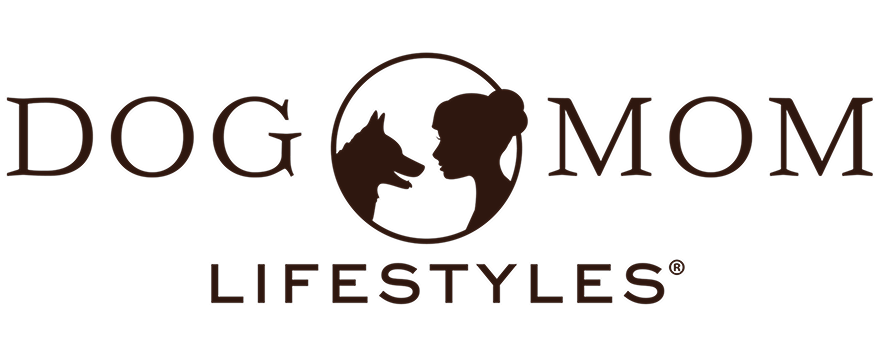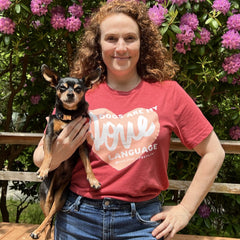How to Calm Your Anxious Dog: 7 Simple Strategies for a Happier Pup
Share
Anxiety in dogs is a common behavioral issue that can significantly impact the quality of life of both the dog and the owner. While any dog can experience anxiety, some breeds are more prone to it due to their genetics, upbringing, or traumatic experiences. In this blog post, we will discuss 7 signs of anxiety in dogs, the breeds that are most susceptible, and what you as a dog mom can do to help your pup overcome this issue.

5 Causes of anxiety in Dogs
Genetics: Some breeds are predisposed to anxiety due to their breed traits and genetic makeup.
Lack of socialization: Dogs that have limited exposure to new people, places, and experiences during critical socialization periods may develop anxiety later in life.
Traumatic experiences: Dogs that have experienced abuse, neglect, or other traumatic events may develop anxiety as a result.
Changes in routine or environment: Significant changes in a dog's routine or environment, such as moving to a new home, changes in family members, or the loss of a loved one, can trigger anxiety.
Medical conditions: Certain medical conditions, such as thyroid problems or chronic pain, can contribute to anxiety in dogs.
It is important to note that anxiety can be a complex issue, and it may be caused by a combination of these factors. If you suspect your dog is experiencing anxiety, it is important to consult with a veterinarian or veterinary behaviorist to determine the underlying cause and to determine the best course of action.

Some of the common breeds who suffer with anxiety are:
- Labrador Retriever
- German Shepherd
- Golden Retriever
- Cocker Spaniel
- Beagle
- King Charles Spaniap
- Yorkshire Terrier
- Many Toy Breeds
- Havanese
- Siberian Husky
Even while these breeds may be more prone to anxiety, any dog can experience anxiety due to various factors, including genetics, upbringing, traumatic experiences, and more. If you suspect that your dog is experiencing anxiety, it is important to consult with a veterinarian or a veterinary behaviorist to determine the best course of action.

Symptoms of anxiety to watch for in dogs:
- Excessive barking or whining
- Destructive chewing
- Urination or defecation in the house
- Panting and shaking
- Hiding or seeking constant attention
- Restlessness or pacing
- Aggression
- Loss of appetite
- Excessive licking or grooming
- Dilated pupils or a fixed gaze.
Here are 7 ways to help with your dog when dealing with anxiety
- Provide plenty of exercise and mental stimulation:
- Take your dog on daily walks
- Engage in interactive play sessions
- Teach new commands and tricks
- Implement a routine:
- Establish set meal times
- Schedule regular walks and playtime
- Provide structure and stability in the home
- Use calming products:
- Consider using pheromone diffusers
- Try calming collars or sprays
- Consult with a veterinarian for recommendations
- Seek professional help:
- Consult with a veterinarian or veterinary behaviorist
- Consider behavior modification therapy
- Medications may be prescribed to manage anxiety
- Reduce stress in the household:
- Practice self-care and mindfulness as a pet owner
- Create a calm and peaceful environment for your dog
- Avoid activities that may trigger anxiety in your dog
- Gradually expose your dog to stressful stimuli:
- Gradually introduce your dog to new experiences and environments
- Positive reinforcement training can help desensitize your dog to stressful stimuli
- Consult with a professional for guidance
- Provide comfort and security:
- Offer a cozy and comfortable place for your dog to rest
- Provide familiar toys and blanket for comfort
- Offer positive reinforcement and affection to your dog.
Remember, every dog is different, and what works for one may not work for another. It is important to work with a professional to determine the best course of action for your individual dog's needs. With patience, persistence, and the right support, it is possible to successfully manage anxiety in dogs.
Conclusion
Anxiety can be a challenging issue for dogs and their owners. However, with patience, persistence, and the right support, it is possible to successfully manage anxiety in dogs. From providing plenty of exercise and mental stimulation, to seeking professional help, there are many ways to help your pup when dealing with anxiety. It is important to work with a professional to determine the best course of action for your individual dog's needs, but with the right approach, you can help your dog lead a happy, healthy, and anxiety-free life.
As a dog mom, it is important to pay close attention to your pup and to seek help if you suspect they may be struggling with anxiety. By implementing the tips outlined in this blog post, you can take an important step towards helping your dog manage their anxiety and lead a happy, healthy life. If you have any concerns or questions, don't hesitate to reach out to a veterinarian or veterinary behaviorist for guidance. Your dog deserves the best, and you have the power to make a difference in their life.








